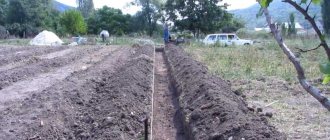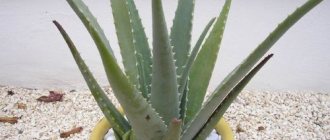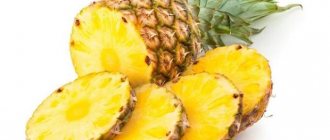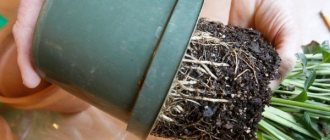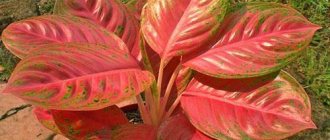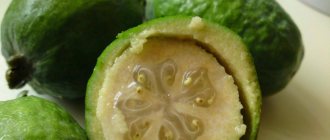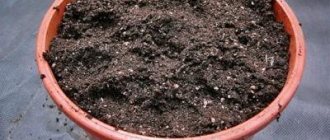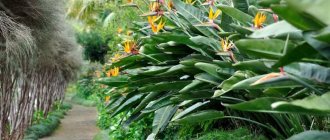Growing figs at home in a pot is not difficult. The plant is unpretentious. Subject to the rules of planting and care, it guarantees a high yield of fragrant, healthy fruits that ripen up to twice a year.
For areas with warm climates, growing fig trees in open ground is typical. The fruit plant takes root well in poor soils, as well as on rocky slopes. For most fig trees, limited root space encourages better fruiting, which guarantees good yield even in a flower pot.
Varieties of figs for home cultivation
When deciding to grow figs at home, first decide on the variety. Of the three groups of plants based on the method of fertilization, preference is given to parthenocarpic plants. They are characterized by self-fertile development of seeds that do not require caprifaction (pollination).
Among the common non-pollinated varieties of figs grown at home are:
- Sochi - 7, Sochi - 8. Characterized by large yellow fruits, elongated pear-shaped or flattened pear-shaped, weighing 55–60 g, sweet taste. Varieties bear fruit once a year, at the end of summer or at the beginning of autumn.
- Dalmatica. It is distinguished by large red, fleshy fruits that weigh 65–70 g, as well as dense, juicy pulp. The harvest is harvested twice a year, in summer and autumn.
- Kadota. A high-yielding variety of figs, it has large pear-shaped juicy fruits weighing 60–65 g.
- White Adriatic. It has sweet, light, yellow-green fruits, weighing 60g.
- Ogloblin seedling. Fruits 1-2 times a year. The pear-shaped fruits are medium in size and moderately sweet in taste. Interestingly, if the fruits begin to set in the fall, they will overwinter like small green berries. In spring, fig fruits enlarge, gain weight, and fully ripen in summer.
- Sukhumi purple. It bears fruit once a year (late summer - early autumn). It is characterized by large pear-shaped, blue-violet, often asymmetrical inflorescences weighing more than 50 g.
All indoor fig trees are characterized by small size and self-pollination.
Landing Features
The question of why figs fall off may have several answers, because even after improper planting, the tree can form fruits that will fall off without maintaining the required yield corresponding to the varietal characteristics.
The main feature of planting figs is their light-loving nature, therefore for the normal development of the plant it is necessary to provide it with good conditions, and it is important to avoid shaded areas and proximity to objects or objects that cast a thick shadow.
How to grow figs at home
Growing figs in a pot and in open ground requires adherence to technologies and rules that guarantee a good harvest from a healthy plant.
Landing dates
Harvesting fig cuttings is optimal when the plant has no leaves and young shoots (January-March). It is carried out in the fall, before the dormant period. In this case, the cuttings are placed for three months in damp sand and a dark place. It takes a month for the cuttings to root, after which the plant is ready to be transplanted into a pot.
The period of propagation of figs by seeds does not differ from the period of cuttings. Please note that the seeds must germinate, which requires additional time. One to two weeks after planting, with proper care, the sprouts reach several centimeters. After the first leaves appear, which happens after a few weeks, the houseplant is ready for replanting.
Fig trees are planted in pots in early spring, which promotes their better rooting and adaptation.
Choosing a place in the house
Choosing a place to install a pot with homemade figs is an important factor that affects the growth and fruiting of the plant. Indoor varieties need good lighting and warmth, but mature indoor figs need space.
Pot and soil
In flat or too deep pots, indoor figs do not grow intensively enough. For reliable rooting of cuttings, the volume of the pot should not exceed 1 liter. Disputes continue between specialists and amateurs: in what pots should rooted cuttings be replanted?
Some argue that the size of a fig tree depends on the underground part. A small house plant will grow in a small pot. If you want to grow a large tree, you should choose a larger pot. A capacity of 6–8 liters is considered optimal. It provides conditions under which domestic figs grow up to 1.5 m and produce up to hundreds of fruits per season.
Other gardeners believe that for best fruiting, the plant needs limited space, which cannot be achieved in tubs and other large containers.
Growing homemade figs are transplanted into a pot that is 5 cm larger in diameter than the previous one. Flat and deep containers are excluded.
First, the cuttings are immersed in a mixture of sand and peat (1:1). To increase moisture capacity, it is advisable to add sphagnum. The seedlings are deepened to the second lower bud. Before transplanting figs into a pot, you need to prepare the soil, which contains:
- peat;
- turf land;
- leaf humus;
- river sand;
- wood ash.
- The substrate is enriched with crushed eggshells.
The bottom of the pot is lined with drainage (coal, pebbles, gravel), the layer of which is 2–3 centimeters. The soil is sterilized in a microwave or oven and saturated with moisture.
Saline and clayey soil is not suitable for planting fig trees.
Planting figs
To propagate homemade figs, seeds or vegetative methods are used, represented by cuttings, layering, and root shoots. Fruiting of figs from seeds occurs no earlier than five years later. This is a long and painstaking process. Seeds are rarely used to produce a quality fruit-bearing fig tree. Therefore, the use of this method is advisable if it is impossible to obtain cuttings or root shoots.
In moist soil made from rotted manure, turf soil, and sand (2:2:1), located in small containers or cups for seedlings. Place washed, dried seeds of healthy large fruits and cover with glass or a plastic bag. Three seeds are placed in each container to select the strongest sprout in the future. To create favorable conditions for the plant, the ambient temperature should not fall below +25ºС. Planting material needs regular, abundant moisture.
When shoots appear, the glass or bag is removed and the container is placed in the southern part of the room. Of all the sprouts, the strongest is left. Among the various methods of propagating figs, cuttings are considered the most common. Seedlings are purchased in specialized stores. In this case, it is necessary to obtain information from the seller about the fruiting of the mother tree under indoor conditions.
When preparing cuttings yourself, choose a fruit-bearing fig tree with fully matured, perhaps semi-lignified shoots. Cuttings with three buds measuring 10–15 cm are cut with a sharp knife or pruning shears. It is important that for each cutting the upper cut is straight and located a centimeter above the upper bud, and the lower cut is oblique (at an angle of 45º) and 2-3 cm below the first lower bud.
To develop the root system, the roots of the cuttings are cut. Before the milky sap hardens, the home seedling is kept in a dark place for 5–7 hours.
To improve adaptation and stimulate root formation, use a Heteroauxin solution in which the cuttings are kept for up to 12 hours. Before the roots appear, the cuttings are kept in water or planted in a mixture of river sand and peat to the depth of the second lower bud.
The planted plant is covered with a jar or transparent bag. It is provided with high humidity and soft lighting. The air temperature in the room is maintained at +22ºС. To quickly adapt the cuttings, the cover is periodically removed. Layers (young shoots) at the roots of the seedling are bent, covered with soil and watered. After the root system is formed, they are dug up and transplanted to a permanent place.
When cuttings and layering, the home plant will begin to bear fruit two years after planting.
Transplanting a young plant
Young fig plants need to be transplanted into larger pots every year. The procedure is carried out as soon as the dormant period ends before foliage appears. After seven years, domestic figs are replanted every few years if necessary.
Known methods of propagating a fig tree
When choosing how to grow figs, it is better to focus on propagation by cuttings, root shoots or layering, because with insufficient experience and care, it is difficult to grow a full-fledged plant from seeds, the process can take several years.
If the mother tree bears fruit, then the layering or cutting, after good rooting, will produce a bountiful harvest. Before purchasing planting material, you need to make sure of its excellent quality and attractive appearance.
Caring for figs at home
Proper care of figs is an important component of plant health and a good harvest.
Irrigation and water quality
To water the fig tree, use soft, pre-settled water slightly above room temperature.
In summer, the plant requires frequent, abundant watering every day. Insufficient watering causes the risk of yellowing and dropping of leaves.
In October-November, before entering dormancy, the plant requires less water. The soil is moistened every 4–5 days. After dropping the leaves, the plant is kept in a dimly lit, cool place. The trees are watered periodically to prevent the soil from drying out.
Selection and timing of fertilizing
Like any cultivated plant, homemade figs need systematic feeding. Fertilizers become necessary in mid-winter at the first signs of bud swelling. The process is repeated every 14 days. Fertilizers are alternated by changing the composition:
- Manure (5g) is mixed with water (1l) and infused for at least a day.
- For phosphorus feeding, 7 g of superphosphate is diluted in a liter of water.
- To make potash fertilizers, ash extract (1 tsp) is diluted in water (1 l) and left for 24 hours.
During the growing season, the plant needs microfertilizers, and during the dormant period, during the dormant period there is no need for fertilizing.
Air humidity
Figs require high air humidity. It is possible to install a special humidifier in the room, systematically bathe the tree in the shower, spray or wipe the leaves with a wet cloth. In winter, the procedure is not necessary due to the lack of leaf plates.
Lighting and temperature
The fig tree should be in a sufficiently lit place in the southern part of the room at a temperature of 15–30ºС. At higher or lower temperatures, the plant slows down its growth, and its death is possible. As soon as the weather warms up, the houseplant is taken outside. In winter, the fig tree is kept at temperatures of +10–15⁰С, without intense lighting and fertilizing.
Pruning and crown formation
The crown is formed in compliance with the following rules:
- Only fruit-bearing plants should be pruned.
- Pruning is carried out in the period before the buds swell.
- It is advisable to trim the top shoots.
- Branches growing inward are removed.
Pruning is necessary not only to give homemade figs aesthetic appeal. Excess shoots reduce the illumination of branches with fruits, which negatively affects the yield.
Possible problems
When properly cared for, figs are rarely attacked by pests. However, great attention must be paid to crown formation. During the active growth of the bush, it grows very quickly. Long branches must be pruned in time. This will make it possible to strengthen the lower shoots.
The plant's root system may suffer from lack of air. Periodic loosening of the soil can prevent this. During insufficient watering, the bush loses its leaves, so you should not allow the soil ball to dry out.
Figs are a fairly unpretentious plant. It can grow successfully both in subtropical regions and in cold climates, as it is resistant to low temperatures and is almost not subject to the harmful effects of pests. Caring for this plant does not require much effort. Organizing the necessary conditions for its cultivation will make it possible to reap a good harvest.
Fig fruiting
Fig fruits ripen 1–2 times a year (summer, autumn), which depends on the variety and conditions of the plant. It is almost impossible to trace how figs bloom. Flowers on the plant, in the form of small hollow balls, are located in pear-shaped inflorescences-syconiums. The appearance of the first inflorescences is observed in the spring; they grow from the axils of young shoots. Fig fruits ripen within one month. During this period, domestic figs should not be threatened by drafts, and they should be watered less.
General information
Initially, the ancient Arabians began to grow figs. Subsequently, their experience was adopted by the peoples of Egypt, Phenicia and Syria, and then by the ancient Greeks.
Fig photo of tree and fruit
Sweet fig fruits were highly valued for their nutritional value; they could be stored dried for a long time, and during periods of poor grain harvest they came out on top in demand.
For a long time, Ficus Carian was the only known genus in European countries.
It was brought to America at the end of the 16th century; it became known in Russia only in the 18th century. under the modified name "fig".
Currently, the fig tree is grown in countries with warm tropical and subtropical climates:
- in Central Asia;
- in the Caucasus;
- in Crimea.
Carian ficus is highly valued as a fruit bearer due to its high nutritional value and abundance of yield. How do figs grow? Plants live a very long time by human standards - the oldest specimens are more than 150 years old.
The fig tree is a light-loving tree; sufficient lighting is the main condition for fruiting. Figs also require a warm, humid climate to grow well.
What does a fig look like? Under natural conditions, fig trees reach a height of 10 m. Their trunks are covered with light gray smooth bark. The hard, large leaves have several separate lobes.
The fruit is an infructescence consisting of many drupes. The fruits are pear-shaped and may differ in color depending on the variety:
- green;
- reddish;
- yellow;
- yellow-green;
- purple;
- black and purple.
Unripe fruits are poisonous, so only fully ripe fruits should be collected.
Diseases and pests of figs indoors
As a cultivated variety, indoor fruiting figs need protection from diseases and pests.
The most harmful thing to a house plant is caused by spider mites, whose activity is promoted by improper care. The spread of the pest is also facilitated by dry, warm air, which is installed indoors during the heating season. The parasites are washed off with powerful water pressure, and the plant is treated with special means.
Coral spot is the most common plant disease. Its symptoms are small red dots on the stems. The affected branches are removed and the plant is treated with fungicides.
It is quite possible to plant and grow figs at home if you follow all the requirements, love and protect the plant from negative factors. Then it will not only delight you with delicious, healthy fruits, but will also decorate your room or terrace.
Crown formation
The crown is formed before the buds swell. Leave 3-4 branches, cut off the rest. Upon reaching a height of 20 cm, the top begins to be pinched. This is done so that the lateral branches grow more. They, in turn, are shortened by a third of their own length, so that the lower shoots become stronger.
Those buds that are directed towards the center of the crown should be trimmed. If this procedure is done correctly, the crown of the tree will turn out beautiful, consisting of 3-4 vertical branches and side shoots.
The fan-shaped crown looks very beautiful. Such figs in the apartment are pleasing to the eye and complement the interior design. The tree not only becomes decorative, but its fruitfulness also increases. For this form, pinching begins from the top bud.
Those shoots whose growth direction is directed into the crown are removed. Leave horizontal branches. They give good yield. In order to obtain a fan-shaped shape, two main parallel horizontal branches are left.
A cut is made above the bud, which increases the number of fruiting shoots. If you follow simple rules, then the home bush, although it does not turn into a beautiful flower that decorates the apartment, will bear fruit in the second year, and then 1-2 harvests annually.
